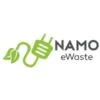With the advent of quickly evolving high technology, people have developed a throwaway mentality. People immediately get rid of electronic items that they no longer require without understanding the amount of resources they are wasting and the danger they are causing to the environment. They must be aware of the fact that though they have unlimited gadgets and electronic items at their disposal, they have a very limited space for the disposal; and a fewer methods of safe disposal through authorised recyclers after the products’ end of life.
The safest solution to the entire problem related to e-waste is electronic recycling. In a layman’s parlance, recycling is all about reusing things for the same purpose, like if you recycle glass, paper or plastic it can be re-used for the same purpose. However, when it comes to recycling a pile of e-waste the process is not that simple. It is complex.
Namo E-Waste having its electronic waste recycling plant in India would like to bring to your notice that recycling of e-waste enables creation of new products and substances that can be used to enhance the physical properties of metals and alloys. According to an article published by IEEE Spectrum on August 6, 2020:
· Research was carried out and it was revealed that some substances found in electronic waste can be recycled and converted to form a strong protective layer for steel.
· After researching it was found that a regulated employment of heat can break and form new chemical bonds among substances present in e-waste to develop new materials that are environmentally friendly. For example, glass and plastic can be mixed to find their use in silicon-laden ceramics.
· It is amazing to note that e-waste contains a lot of valuable materials that can be reformed to develop fresh products.
· Copper ore contains only 3 % copper while printed circuit boards (PCB) contain about 10–20 % copper. Extracting copper from discarded PCBs is more economical than mining copper.
Studies were conducted on the chemical properties of silica and copper compounds present in discarded PCBs and old computer monitors. The studies revealed that silica and copper derived from e-waste can be easily fused together to develop new hybrid substances. This new substance can be used to protect surfaces of metals against wear and corrosion.
The new hybrid material was developed through a process involving the following steps:
· Plastic powder created by crushing shells and monitor screens along with glass was heated to 1,500 degrees C. It produced silicon carbide wires with 10 to 50 nanometer diameter.
· These nanowires of ceramic were fused with copper extracted from PCBs. The combined product was mixed on a surface of steel, which was later heated to 1,000 degrees C.
· A film of 1 micron thickness of copper was formed atop the steel.
· The experts found that the hybrid layer of micron-thickness enhanced the surface toughness of steel by almost 125%.
It is interesting to note that:
This regulated structural re-bonding of various elements developed novel properties that were far better than that of the original materials. For instance, the structure of metal possesses a better toughness but has a poor hardness, whereas a ceramic possess good hardness but is extremely brittle.Imagine the potential of e-waste! By just combining two substances together under regulated temperature experts created a totally new and different hybrid substance that has the hardness of a ceramic and toughness of a metal. Doesn’t this surprise you?You can save valuable resources from being ruined by not dumping your e-waste in the landfills!E-waste management in India is still in its nascent stage and more awareness needs to be created among people.Using the keywords, ‘e-waste collection centre near me’ search for the nearest e-waste collection centre of Namo E-Waste and carry out your national duty of disposing of the e-waste in a formal and legal manner.Conclusion
The hybrid material produced by recycling electronic waste supports sustainable resource management which is the main concern these days by the Corporations.
0



